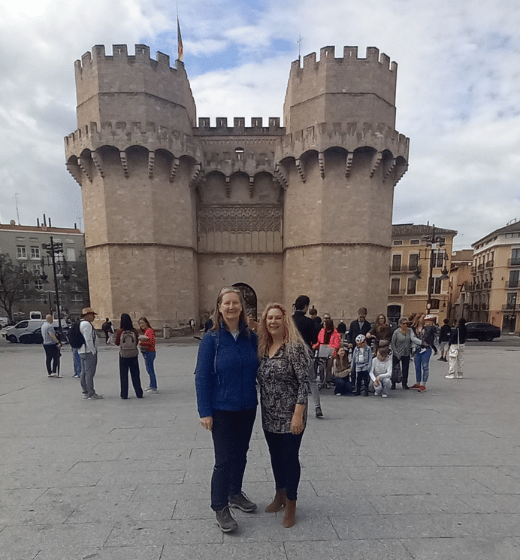

If you’re someone who loves to travel and dreams of speaking Spanish confidently during your adventures, you’re not alone. Many of us want more than just to ask basic Spanish phrases like “¿Dónde está el baño?” or “¿Habla inglés?”. In many Spanish-speaking countries, English speakers may be limited, so learning Spanish becomes even more important for travelers to communicate effectively and enhance their experience.
We want to connect with the people, understand the culture, and truly immerse ourselves in the experience. This is where the magic of the Spanish Homestay Immersion Programme (SHIP) comes in. It’s about stepping beyond the classroom and into real-world Spanish-speaking countries, where every conversation helps you grow.
I’m sharing this blog to give you a taste of how SHIP can transform your travel experience. Let me tell you about one of our students, Elaine, and how she learned Spanish in Valencia in a way she never expected.
Meet Elaine: The British Adventurer
Elaine is a 62-year-old British traveler with a zest for life and learning. She’s not your typical tourist, she’s the kind of person who likes to get involved with the local culture, understand it, and speak the language. That’s why she joined our Spanish Homestay Immersion Programme (SHIP) in Valencia, hoping to learn Spanish so she could travel more confidently and truly connect with locals during her journeys to Spanish-speaking countries.

Elaine has a love for horse riding, Pilates, and Zumba, so she’s all about movement and staying active. She also enjoys visiting new destinations and immersing herself in their culture, and speaking the local language is always a key part of that experience. Learning Spanish gave Elaine a new appreciation for her own native language, helping her see the connections between English and Spanish and deepening her understanding of both. As she said, “Learning Spanish isn’t just for ordering food or asking for the bathroom, it’s about connecting with people, whether I’m in Latin America or Spain.”
Her objective?
Elaine wanted to go beyond memorizing the most common Spanish phrases and instead gain enough fluency to have meaningful conversations in Spanish-speaking countries. I couldn’t wait to help her get there!
A Warm Welcome with Paella and Sangría
When Elaine first arrived in Valencia, we wasted no time in making her feel at home. The very first day, we treated her to a traditional Valencian paella and homemade sangría, a warm, lively introduction to the region’s famous cuisine.

At the dinner table, Elaine was eager to start speaking Spanish, saying, “¡Esta paella está riquísima!” (This paella is delicious!) while simultaneously practicing some basic Spanish phrases. We laughed and toasted to new adventures as we made sure to practice some common Spanish phrases such as “Por favor” (please), “¿Cómo te llamas?” (What’s your name?), “Buenos días” (good morning), “Buenas tardes” (good afternoon), “Buenas noches” (good night), “Hola” (hello), “Gracias” (thank you), and “Mucho gusto” (nice to meet you), and I could see her confidence growing already.
We spent the afternoon chatting about travel, fitness, and of course, the joy of learning a new language. “Now, this is a good way to start!” she said as she savored the meal.
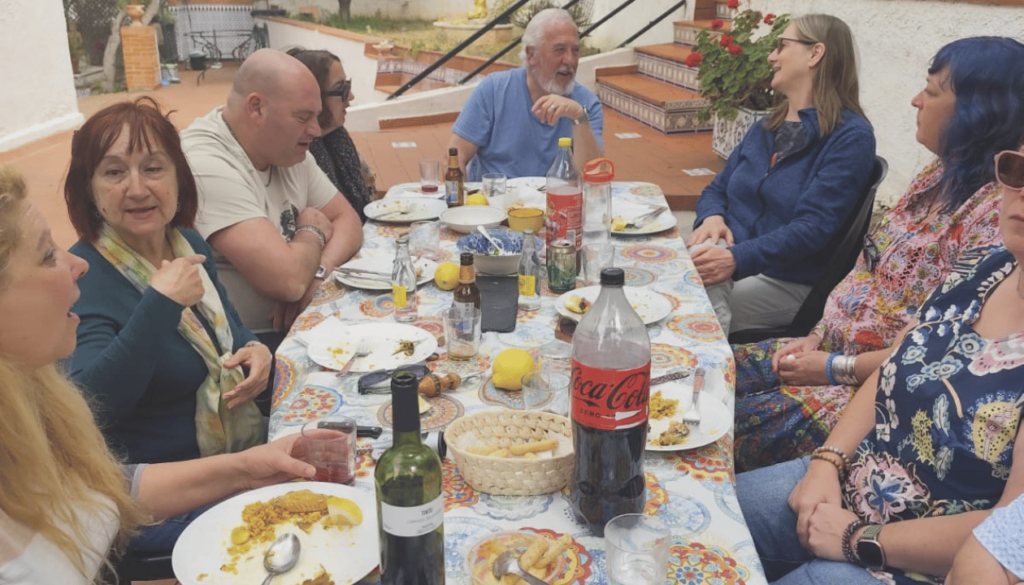
First Day Challenge: Sagunto’s Roman Heritage
The next day, Elaine and I, along with a couple of fellow students, set off for Sagunto, a historic town just a short drive away from Valencia. Known for its ancient Roman ruins, it was the perfect place for a bit of culture and Spanish practice.
The day started with a gentle hike to the Roman Castle perched atop a hill. As we climbed, Elaine and I had a chance to practice asking and answering questions like, “¿Dónde está el baño?” (Where is the bathroom?), and “¿Cuánto cuesta la entrada?” (How much is the entry fee?). We also practiced polite ways to get someone’s attention, like “Disculpe” (Excuse me), and how to ask if someone speaks English: “¿Habla inglés?” (Do you speak English). For moments when we didn’t understand, we used “No entiendo” (I don’t understand).
At the Roman theatre, I pointed out the ancient stones, explaining their significance in Spanish. Elaine was eager to absorb the Spanish language through every new word she encountered, from teatro (theatre) to ruinas (ruins).
It was wonderful to see her actively engage with Spanish in such an immersive way. We even took a moment to joke around and practice some funny phrases like “¿Cómo se dice…?” (How do you say…?) as we tried to recall the right words for everything we were seeing. By the end of the trip, Elaine was feeling more comfortable than ever using Spanish phrases in real conversations.
Strolling Through Valencia’s Historic Center
Back in Valencia, we spent the next day strolling through the city’s historic center, visiting sites like La Lonja, Valencia Cathedral, and the Serranos Towers. We weaved through the plaza, chatting about the architecture and history in Spanish.

Elaine was surprised at how much she understood, especially when locals greeted her with “¡Buenos días!” (Good morning). She even learned how to respond with “¡Buenos días, gracias!” (Good morning, thank you) and exchange pleasantries in Spanish. We also practiced using “¿Qué tal?” as a casual greeting, and “¿Cómo está?” as a formal way to ask someone how they are—for example, “¿Qué tal?” (How’s it going?) or “¿Cómo está?” (How are you?).
While exploring La Lonja, Elaine wanted to know more about the architecture, so she asked a local guide in Spanish, “¿Cómo se llama este edificio?” (What’s the name of this building?). It was an impressive moment, her Spanish was already starting to sound more natural, and she was confidently asking questions about the city’s landmarks.
By the time we reached Plaza Redonda, Elaine had no problem ordering a coffee with “La cuenta, por favor” (The check, please), or asking “¿Cuánto cuesta?” (How much is it?) when shopping. She was gaining confidence with common Spanish phrases at every turn!
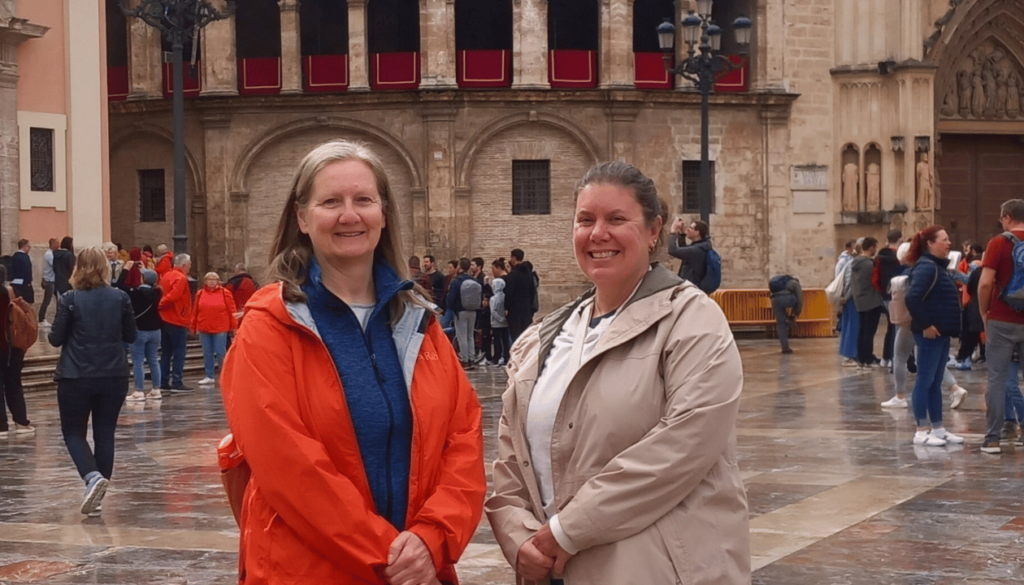
Basic Spanish Phrases for Travelers
Traveling to a Spanish-speaking country is an exciting adventure, and knowing a few basic Spanish phrases can make your journey smoother and more rewarding. Whether you’re exploring the vibrant streets of Spain or discovering the wonders of Latin America, being able to speak Spanish, even just a little, opens doors to authentic experiences and meaningful connections with locals.
Start with the essentials: greetings and introductions. Saying “Buenos días” (good morning), “Buenas tardes” (good afternoon), or “Buenas noches” (good night) is a simple way to show respect and friendliness. When meeting someone new, try “¿Cómo te llamas?” (What’s your name?) or “Mucho gusto” (nice to meet you). These common Spanish phrases help break the ice and show your interest in the local language.
Navigating a foreign country is much easier when you know how to ask for directions. Use “¿Dónde está el…?” (where is the…) followed by your destination, like “el banco” (the bank), “el aeropuerto” (the airport), or “el baño” (the bathroom). If you need to clarify directions, remember “la izquierda” (left) and “la derecha” (right). And if you’re feeling lost, don’t hesitate to say, “Estoy perdido” (I am lost).
Dining out? Mastering a few basic Spanish travel phrases will help you order with confidence. Ask for the bill with “La cuenta, por favor” (the bill, please), and use “Por favor” (please) and “Gracias” (thank you) to show good manners. If you have dietary needs, “Tengo alergia a…” (I’m allergic to…) is a useful phrase to know.
Sometimes, you might need a little extra help. If you’re unsure whether someone can speak English, politely ask, “¿Habla inglés?” (do you speak English?). In case of an emergency, “Necesito un médico” (I need a doctor) is an important phrase to remember. And if you’re searching for something specific, try “¿Dónde puedo encontrar… por favor? ” (where can I find…please?).
Learning basic Spanish isn’t just about memorizing words, it’s about building confidence to interact with native speakers and overcoming language barriers. Even if you make mistakes, locals in Spanish-speaking countries will appreciate your effort to speak Spanish and connect in their official language.
With a handful of key phrases and a willingness to try, you’ll find that your travels become richer and more enjoyable. So, whether you’re asking “¿Cuánto cuesta?” (how much does it cost?), greeting someone with “Buenas noches” (Good night) or simply saying “Lo siento” (I’m sorry), every word you learn brings you closer to the heart of the culture.
Embrace survival Spanish and start practicing these basic words before your next trip. You’ll be amazed at how much a little Spanish can transform your experience in any Spanish-speaking country!
A Peaceful Boat Ride on La Albufera
One of my favorite experiences with Elaine was our visit to La Albufera, a beautiful nature reserve located just outside Valencia. We spent a serene afternoon exploring La Albufera by boat, and Elaine was over the moon when I asked her to help with some basic Spanish words to describe the sights.
She pointed out the ducks (patos) and reeds (juncos) in Spanish, making her way through new vocabulary with ease. It was the perfect setting to learn more Spanish travel phrases like “¿Dónde está el lago?” (Where is the lake?) and “¿Cuánto cuesta el billete para el barco?” (How much is the ticket for the boat?). We also practiced useful phrases for dining out, such as how to mention food allergies. For example, Elaine learned to say “Tengo alergia a las nueces” (I am allergic to nuts), which is helpful when discussing dietary needs at restaurants. Elaine was already using these basic Spanish travel phrases naturally in real-life scenarios, and it felt like a big step forward.
The boat ride was so peaceful, a gentle reminder of the quiet beauty of the region. As the sun began to set, we all took a deep breath, soaking in the atmosphere. Elaine whispered, “Este es el lugar perfecto para aprender español” (This is the perfect place to learn Spanish), and I couldn’t agree more. She had truly started to absorb the language through the natural flow of daily life.
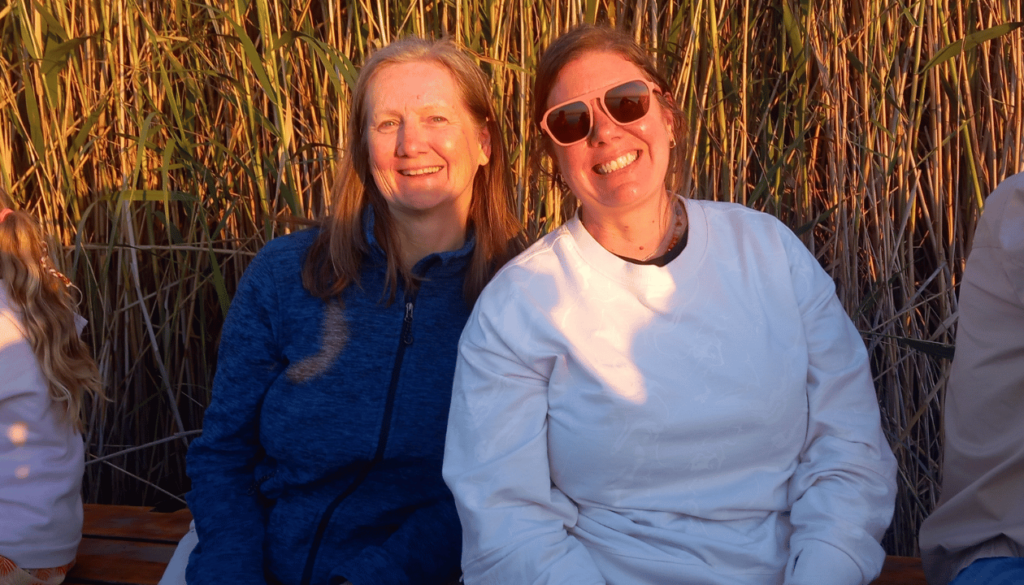
Exploring the City of Arts and Sciences
The following day, Elaine and I, along with the other students, explored Valencia’s iconic City of Arts and Sciences. This futuristic complex is a stark contrast to the city’s historic center, but is no less impressive.
We spent time walking through the Hemisférico and visiting the Príncipe Felipe Science Museum. Elaine was eager to practice new vocabulary related to science and technology. I helped her with words like “astronomía” (astronomy) and “ciencia” (science).
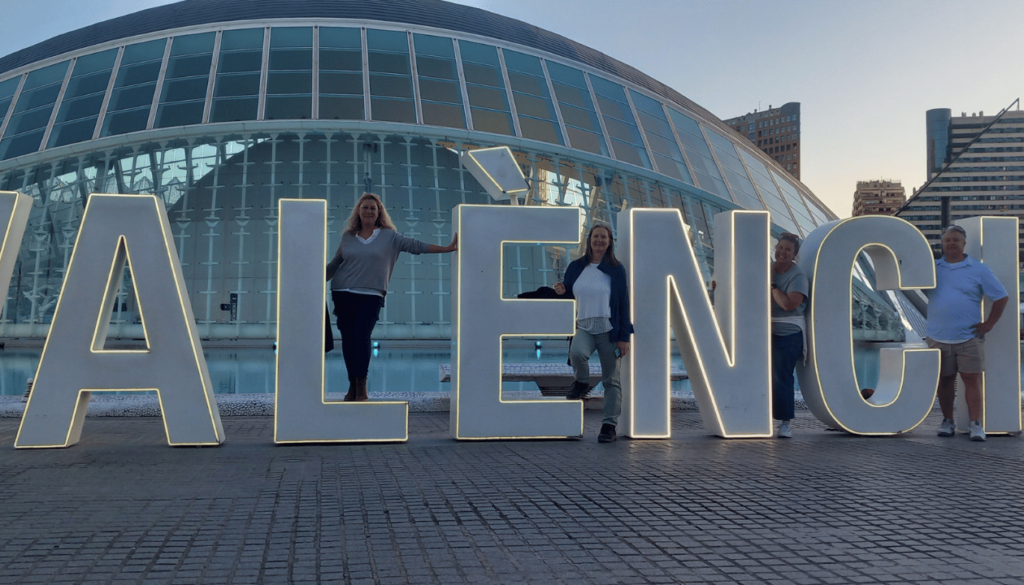
Elaine even asked a guide about the exhibits in Spanish, getting involved in the conversation and practicing her listening comprehension. She asked, “¿Cómo llego a la exposición de espionaje?” (How do I get to the espionage exhibit?). Later, when we were ready to leave, she confidently asked, “¿Dónde puedo encontrar un taxi?” (Where can I find a taxi?), using another essential travel phrase.
Her fluency had definitely improved, and now she was navigating Valencia like a true local, asking for directions and understanding the answers.
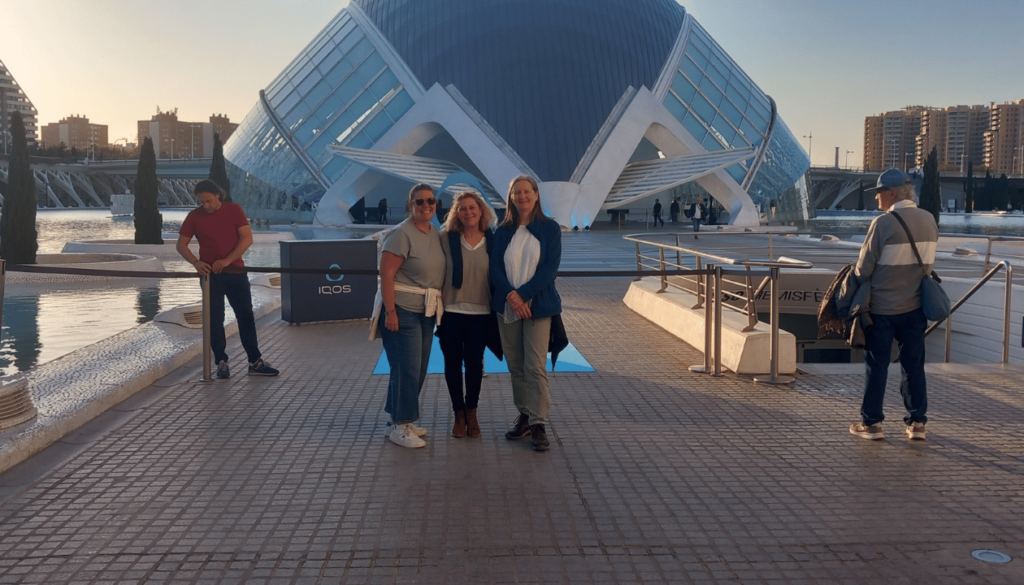
Flamenco: The Perfect Ending to an Unforgettable Week
As the week drew to a close, we ended with a flamenco performance. Elaine had heard about flamenco but never had the chance to see it live. The flamenco show was full of passion, energy, and rhythm, a true display of Spanish culture. Elaine’s eyes widened as the dancers twirled and clapped their hands in time with the guitar, and she couldn’t resist the urge to clap along.
By now, Elaine was comfortable speaking Spanish in every situation, from ordering food to asking questions and even chatting with strangers. At the show, she exclaimed in Spanish, “¡Es impresionante!” (It’s amazing!), and everyone around her nodded in agreement. After the show, I encouraged Elaine to use Spanish when thanking the performers. She did so with ease, saying, “Gracias por la maravillosa actuación” (Thank you for the wonderful performance).
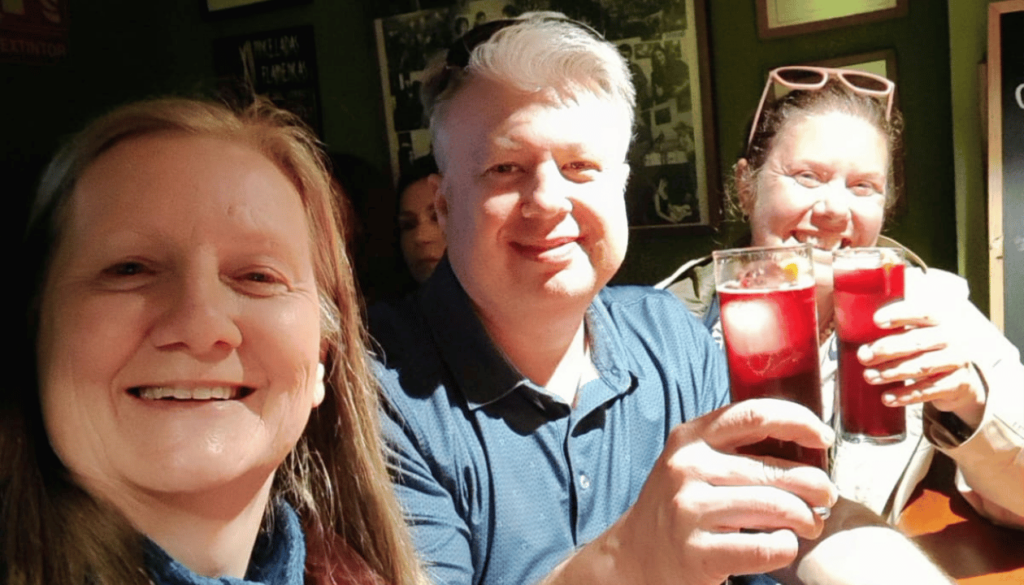
Elaine’s Journey: From Basics to Fluent Conversations
By the end of the week, Elaine had come a long way. She entered the Spanish Homestay Immersion Programme (SHIP) as someone who knew basic Spanish phrases like “¿Dónde está el baño?” (Where is the restroom?) and “¿Habla inglés?” (Do you speak English?), but she left feeling confident and fluent enough to converse in Spanish.

She was no longer just saying “¿Dónde está el banco?” (Where is the bank?) or asking for the bill with “La cuenta, por favor”. Now, she could comfortably ask questions, express herself with Spanish phrases, and even chat about her day at the market or the beach.
Her growth was inspiring, and I felt so proud watching her use her new Spanish skills in everyday situations. As Elaine reflected on the week, she said, “I feel more confident now. I’ve learned how to speak Spanish naturally. I’m ready for my next adventure in a Spanish-speaking country!”
Ready for Your Own Spanish Adventure?
Are you ready to take the plunge and learn Spanish in the most immersive way possible? If Elaine’s experience inspired you, it’s time to book your own Spanish Homestay Immersion Programme (SHIP)! Whether you’re looking to learn Spanish for traveling to a Spanish speaking country, deepen your cultural understanding, or become fluent in everyday conversations, Spanish Express offers an incredible opportunity to experience Spain firsthand.
Come join us in Barcelona, Menorca, Burgos, Cádiz, Extremadura, Sevilla, or Valencia. You’ll stay with a local teacher’s family, practice basic Spanish phrases daily, explore the city, and immerse yourself in the culture. No more feeling like a tourist – you’ll be living, breathing, and speaking Spanish the entire time.
Book your SHIP experience today and start your own Spanish adventure – ¡Te esperamos! (We’re waiting for you!)
What is the 80/20 rule for learning Spanish?
The 80/20 rule for learning Spanish suggests focusing on the 20% of language skills (key phrases, vocabulary, and grammar) that will help you communicate in 80% of travel situations.
How long does it take to learn Spanish for travel?
The time it takes to learn Spanish for travel depends on individual effort and immersion. With Spanish Express’ SHIP, you can make significant progress in just one week of full immersion.
How to learn basic Spanish for travel?
To learn basic Spanish for travel to any Spanish speaking country, focus on practical Spanish phrases, greetings, ordering food, and asking directions. Our Spanish Homestay Immersion Programme (SHIP) offers hands-on learning in real-life situations.
What is the best way to learn a language for travel?
The best way to learn a language for travel is through immersion. Spanish Express’ SHIP provides full cultural immersion, living with locals and practicing Spanish daily in natural settings for faster learning.

